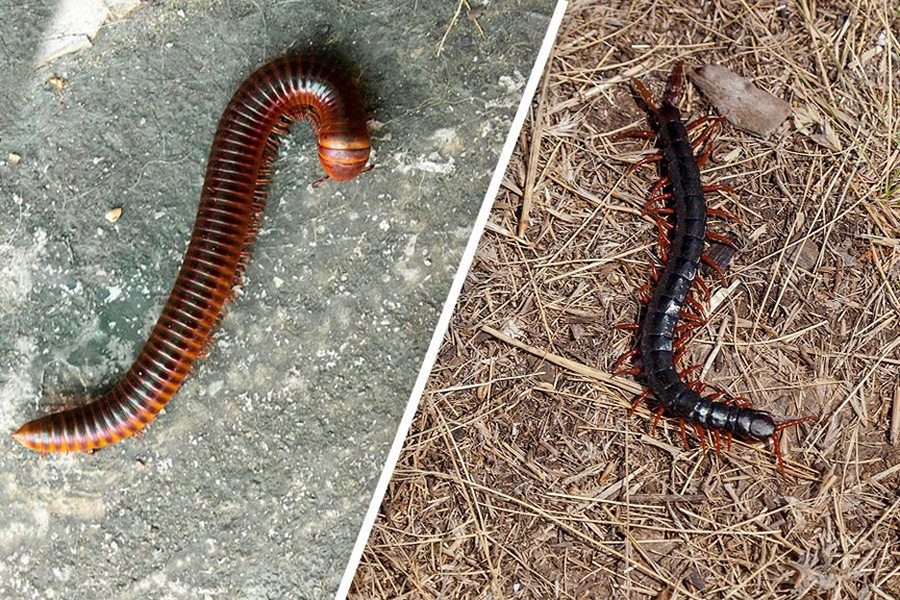Key Differences Between Millipedes and Centipedes
- Details

You've likely encountered these critters and while they may seem intimidating at first glance, they are fascinating arthropods. Centipedes and millipedes have many similarities, such as segmented bodies, and both have one pair of antennae and many legs on each side. With this body form in common, it can be hard to tell whether what you are looking at is a centipede or a millipede.
Their differences are more plentiful than you might think. The way they move, their defense mechanisms and their eating habits are just a few of the key differences between millipedes and centipedes.
Millipede Identification and Behavioral Facts
Millipedes have two pairs of short legs on each body segment and a rounded body. Their legs are tucked under and not easily seen. The number of body segments varies with the species. Millipedes move slowly and have short antennae. They will coil up and release an odorous secretion when threatened. Unlike centipedes, millipedes are docile and don't sting or bite. Their only defense is the chemicals they emit, but it can cause a reaction such as a burning sensation if humans come into contact with it.
Millipedes are herbivores and survive by burrowing in damp soil, slowly eating their way through the moist leaf clutter, fungi, and decayed plant material. They can benefit gardens like earthworms do, aerating and enriching the soil as they feed.
Millipedes and centipedes have a long lifespan for arthropods and can live up to 7 years. Some species have been known to live even longer! They mainly stay outdoors to nest and feed. They can find their way indoors through cracks and holes. Like any pest, if they do find their way indoors they will multiply and can become a concern.
Centipede Identification and Behavioral Facts
Centipedes have only one pair of legs on each body segment; these legs are easily seen sticking out from their flat bodies. The number of body segments varies from species to species. Centipedes are fast-moving and flexible which helps them when hunting and hiding and they can quickly move backward and sideways if necessary. When they need to defend themselves, they can bite—which is typically harmless to humans—and can rapidly move away from threats. Centipedes prefer dry environments.
Their long antennae, which are about the length of their legs, assist them with locating their prey. They capture their prey using their first pair of legs. Centipedes are carnivores, feeding mostly on spiders, worms, and other arthropods that they devour after paralyzing them with venom. There is an Amazonian giant species of centipede measuring over twelve inches in length and is known to eat frogs, mice, and large lizards.
At Eagle Pest Services, our focus is on effective pest control with the highest quality of service and competitive pricing. Our technicians are here to help with all your pest problems. Contact us today for a free inspection at 1-(866) 281-1822.





